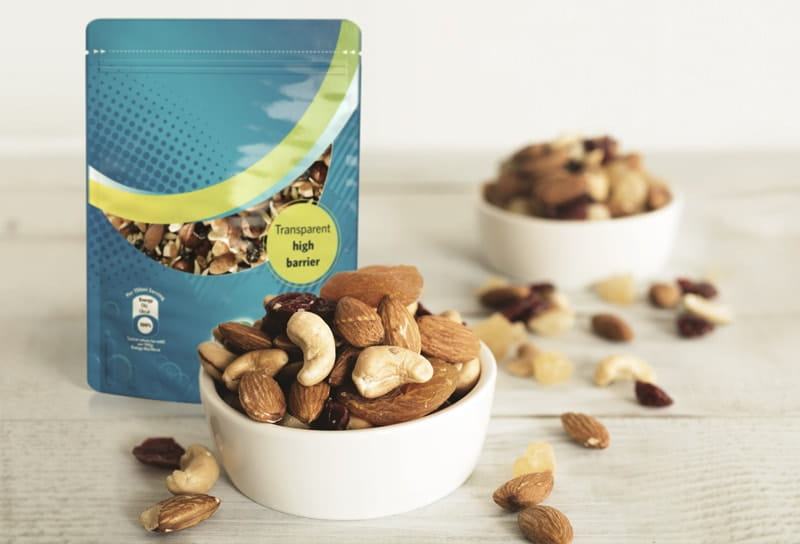Source: Link Testing Instruments Co.,Ltd.

Nuts are rich in fat, protein, carbohydrates and various organic acids. Because of its sweet fragrance and delicious taste, it has become a must-have snack for the general public. The common material used in the packaging of nuts is aluminized composite film, that is, aluminum oxide material is evaporated on one of the plastic films. Compared with other plastic composite films, the composite film containing aluminum metal material is more prone to brittle cracking, creases and pinholes. Etc., if the aluminized composite film packaging has poor flexibility, the number of creases and pinholes will be dense, and the packaging barrier properties and physical and mechanical properties will be reduced, which will easily lead to slight air leakage or even bag breakage, resulting in the appearance of nuts. deterioration, etc. In order to prevent the above problems, how to verify the flexibility of the aluminized composite film requires nut manufacturers to strengthen the inspection of the barrier performance before and after the rubbing of the aluminized composite film.
Test methods and instruments
The domestic testing methods for oxygen in the packaging of soft composite sheets include the coulomb counter method (isobaric method) and the differential pressure method. Law" and GB/T 19789-2005 "Coulomb Counter Detection Method for Oxidative Permeability Test of Plastic Films and Sheets of Packaging Materials", the reference standard in this article is GB/T1038 differential pressure method. At present, there is no targeted testing standard for rubbing performance in China. The test in this paper refers to ASTM F392 "Test Method for Flexural Durability of Flexible Barrier Materials" to simulate the process of aluminum-plastic composite film in the process of production, processing and transportation. rubbing, crushing and other behaviors. In this paper, the anti-rubbing performance of the material is judged by detecting the change of the barrier properties of the samples before and after rubbing.
The instruments used in this test are the RCT-02 Flex Durability Tester and the Gas Permeability Tester GTC-203H independently developed and designed by Link Testing Instruments Co.,Ltd.
Test samples and test procedures
Test sample: Nut aluminized composite film provided by a certain brand.
Sample preparation process:
Three samples with a size of Φ97 mm were cut from the uncrusted nut aluminized composite film sample with a sampler, and the oxygen transmission rate was to be tested.
Then cut 3 samples with a length of 280mm and a width of 200mm from the unrubbing nut aluminized composite film sample, and fix the samples on the RCT-02 Flex Durability Tester with a pressure-sensitive double-sided tape with a width of 10 ~ 12mm. The rubbing mode was tested.
Use a sampler to cut 3 samples of size Φ97 mm from the kneaded samples, and their oxygen transmission rates are to be tested.
Experimental procedure:
(1) Clamp the three samples before rubbing in the test chamber of the GTC-203H differential pressure gas permeameter for testing.
(2) Set parameters such as sample name, sample thickness, test temperature, and test humidity on the differential pressure gas permeameter.
(3) Start the vacum pump.
(4) Click the "Start Test" option, the test starts, and the instrument automatically calculates and displays the test results.
(5) The 3 pieces of samples after rubbing are tested in sequence according to the steps (1) to (4), and the changes in the average oxygen transmission rate of the samples before and after rubbing are compared.
Test Results and Analysis
The average oxygen transmission rate of the samples tested this time before rubbing is: 0.5584 cm3/m2·24h·0.1MPa; the average oxygen transmission rate after rubbing is 19.5874 cm3/m2·24h·0.1MPa.
From the above results, it can be seen that the oxygen transmission rate of Nut aluminized composite film after rubbing increases significantly, indicating that the Nut aluminized composite film is prone to creases or tiny pinholes in the production and sales process, which may easily lead to excessive oxygen transmission. . In order to ensure the shelf life of the product, quality screening can be carried out by timely monitoring the oxygen transmission rate change before and after rubbing the aluminized composite film packaging used. GTC-203H Gas Permeability Tester is a professional oxygen transmission rate tester for films and sheets. The equipment is easy to operate, with high test accuracy and good repeatability. Combined with the RCT-02 Flex Durability Tester, it is used to evaluate the before and after packaging. Anti-rubbing properties, barrier properties and sealing properties of aluminum-plastic composite films.
For more details please visit www.linktesting.org